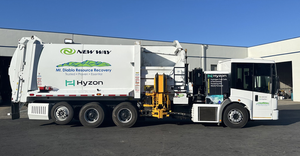Environmental Justice and the Waste Industry – A New Jersey Perspective

The siting of waste facilities in low-income communities and communities of color has been the subject of growing discussion; in fact, many waste management companies have committed publicly to supporting environmental justice efforts, including Covanta and Waste Management. Although the initiatives championed by these companies to date have mostly been voluntary, it seems likely that in the near future governmental policies and laws will require the waste industry to take specific, additional actions to address environmental justice.
For instance, New Jersey’s Environmental Justice Law (the EJ Law) is being cited as one of the most comprehensive in the United States and is being considered as a model for other states and the federal government. The Garden State enacted the EJ Law in September 2020, empowering the New Jersey Department of Environmental Protection (NJDEP) to deny permits for certain facilities if the facility would contribute to a disproportionate impact on an overburdened community (i.e., a community where environmental justice concerns are present). The law contains a strong framework for addressing environmental justice issues during permitting of facilities, but several complicated issues need to be considered before the law is implemented and before it truly can serve as a guidepost for other jurisdictions.
According to the NJDEP and the United States Environmental Protection Agency (USEPA), environmental justice efforts respond to this discussion by ensuring “fair treatment and meaningful involvement of all people regardless of race, color, national origin, or income with respect to the development, implementation, and enforcement of environmental laws, regulations, and policies.”
The EJ Law addresses this discussion by incorporating environmental justice into the permitting process for certain permit applications. The requirements of the law apply to covered facilities, seeking applicable permits, located in an overburdened community.
Covered facilities include: all major sources of air pollution (i.e., facilities with Title V air permits, such as power plants), solid waste facilities, landfills, incinerators, sludge processing plants, sewage treatment facilities that process more than 50 million gallons per day, scrap facilities, as well as recycling facilities that process more than 100 tons per day.
Applicable permits include: “any individual permit, registration, or license” issued under numerous New Jersey environment laws. Notably, the definition only explicitly includes individual permits, which contain requirements specific to the individual facility; the definition may not include general permits, permits-by-rule, or other standardized permits. While the legislation applies to all covered permits for a new facility or for the expansion of an existing facility, it only applies to the renewal of a Title V permit, not the renewal of any other covered permits.
Overburdened community is based on certain socio-economic demographics —Any census block group, as determined in accordance with the most recent US Census, in which:
(1) at least 35 percent of the households qualify as low-income households; OR
(2) at least 40 percent of the residents identify as minority or as members of a state-recognized tribal community; OR
(3) at least 40 percent of the households have limited English proficiency.
According to NJ Spotlight, “the . . . definition of ‘overburdened communities’ could apply to more than 300 municipalities and over 4 million residents.” New Jersey has released several tools to identify and map overburdened communities, including a GIS mapping tool.
If these three conditions are met, the facility must comply with the EJ Law, which the NJDEP recently described as possibly involving a four-step process.
Step 1 – Initial Screen: The NJDEP expects to provide a data mapping tool that is to be publicly available, and can be used to determine whether the overburdened community in which the subject facility is or will be located already is subject to disproportionate environmental and public health stressor levels when compared to the appropriate geographic point of comparison. (In other words, a facility should be able to determine at the outset not only whether it is or will be located in an overburdened community, but also whether that community already faces a disproportionate impact that is likely to trigger the substantive requirements of the EJ Law, such as permit conditions or denial, discussed in more detail below.) In a stakeholder meeting on the subject, NJDEP representatives discussed several approaches for determining whether a disproportionate impact already exists in a community through a statistical approach based on widespread impacts. For instance, using air toxics data as an example, one approach considered whether the host community had more air pollution than a specified percentage of other communities within the State. Another approach compared the host community statistically to other communities within the same county. Yet another approach compared the host community to communities within the same county as well as the State. Each of these approaches involves certain priorities and trade-offs. In the end, the NJDEP representatives said they would select one of these approaches to be applied uniformly across all sites and impacts, which would provide additional certainty to the process but would curtail the ability of permittees and communities to identify case-specific factors.
Step 2 – Disproportionate Impact Analysis: Through the preparation of an Environmental Justice Impact Statement (EJIS), including a public hearing in the host community, the subject facility analyzes whether and how the proposed facility will cause or contribute to disproportionate stressor levels and proposes avoidance measures. If the subject facility cannot avoid causing or contributing a disproportionate impact, it is subject to the substantive requirements of the EJ Law referenced above and discussed in the next steps. However, the EJ Law does not explicitly define the specific components of the EJIS, the environmental impacts to be considered, or how to calculate and compare these impacts. For example, a solid waste facility to be located in an overburdened community would need to prepare an EJIS that addresses environmental impacts across all media. In other words, using the broadest interpretation of the law, the facility might need to consider various impacts, such as air emissions from the facility/associated operations, including truck traffic; waste/storm water discharges; noise pollution; disruption of green space/natural resources; psychological effects on the community; and more. In the end, what is the cumulative impact of the project? Is it measured holistically or according to each individual impact? In a recent stakeholder meeting, the NJDEP addressed some of these issues. It noted that it will select specific environmental impacts to be evaluated, and will not require facilities to evaluate all possible impacts. To perform this evaluation, the NJDEP intends to rely as much as possible on existing data sets, although some modeling and/or forecasting is expected, especially with respect to air emissions.
Step 3 – Permit Conditions (Applicable to Facility Expansions and Title V Renewals): If an existing facility has a disproportionate impact, where necessary to avoid or minimize potential adverse impacts, NJDEP may impose binding permit conditions concerning the construction and operation of the facility. The EJ law states that permit conditions are to be imposed “on the construction and operation of the facility to protect public health” and are intended “to avoid or reduce the adverse environmental or public health stressors affecting the overburdened community.” NJDEP also has questioned whether the conditions should require use of best available control technology, and on what frequency best available control technology should be updated (i.e., every five years or a longer period of time). Federal case law suggests that permit conditions must demonstrate a “nexus” and “rough proportionality” between the conditions being imposed and the environmental impact. There must be a direct connection between the harm caused by the facility and the condition being imposed, which must be similar in size and nature to the harm. Related questions include: Are facilities automatically required to make all possible reductions of environmental impacts before conditions are considered? While NJDEP has indicated that monetary burden will not be an acceptable argument to avoid these permit conditions, it must be considered under existing law in order to evaluate the proportionality of the conditions. In a recent stakeholder discussion, NJDEP noted that mitigation may be allowed, but advised that there will be limits on the scope of mitigation and how it will impact the process.
Step 4 – Denial or Compelling Public Interest (Applicable to New Facilities): If a new facility projects that it will have a disproportionate impact, the NJDEP must deny the permit application unless the new facility will serve a compelling public interest in the community where it is to be located. If so, the NJDEP may impose binding permit conditions on the construction and operation of the facility to protect public health. But how does one determine when a project serves a compelling public interest? Industry representatives have suggested that support of the facility by local zoning and planning boards should be considered as evidence for compelling public interest. NJDEP also has acknowledged the difficulty in determining the aggregate consensus of a community, which by definition involves many disparate individuals and entities.
To reiterate, for a new facility, if the NJDEP determines that there would be a disproportionate impact, the NJDEP must deny the permit application, unless there is a compelling public interest, in which case the NJDEP may grant the permit after imposing additional conditions. For existing facilities, if a disproportionate impact is found, NJDEP may not deny the permit and may only impose conditions.
While the EJ Law is garnering a great deal of attention for its scope and potential impacts, care must be taken with the implementation regulations to provide a clear framework for affected facilities. These regulations are expected at the earliest in late 2021. The NJDEP is continuing the stakeholder process on this transformational regulation — the author of this article will continue to watch for developments.
Article is a follow up to an October 2020 webinar, “New Jersey’s New Environmental Justice Law: An Overview of the EJ Law and Possible Implications for Affected Facilities.” Whitehead, Chris; Voit, Kevin; Karmel, Matthew.
About the Authors
You May Also Like




